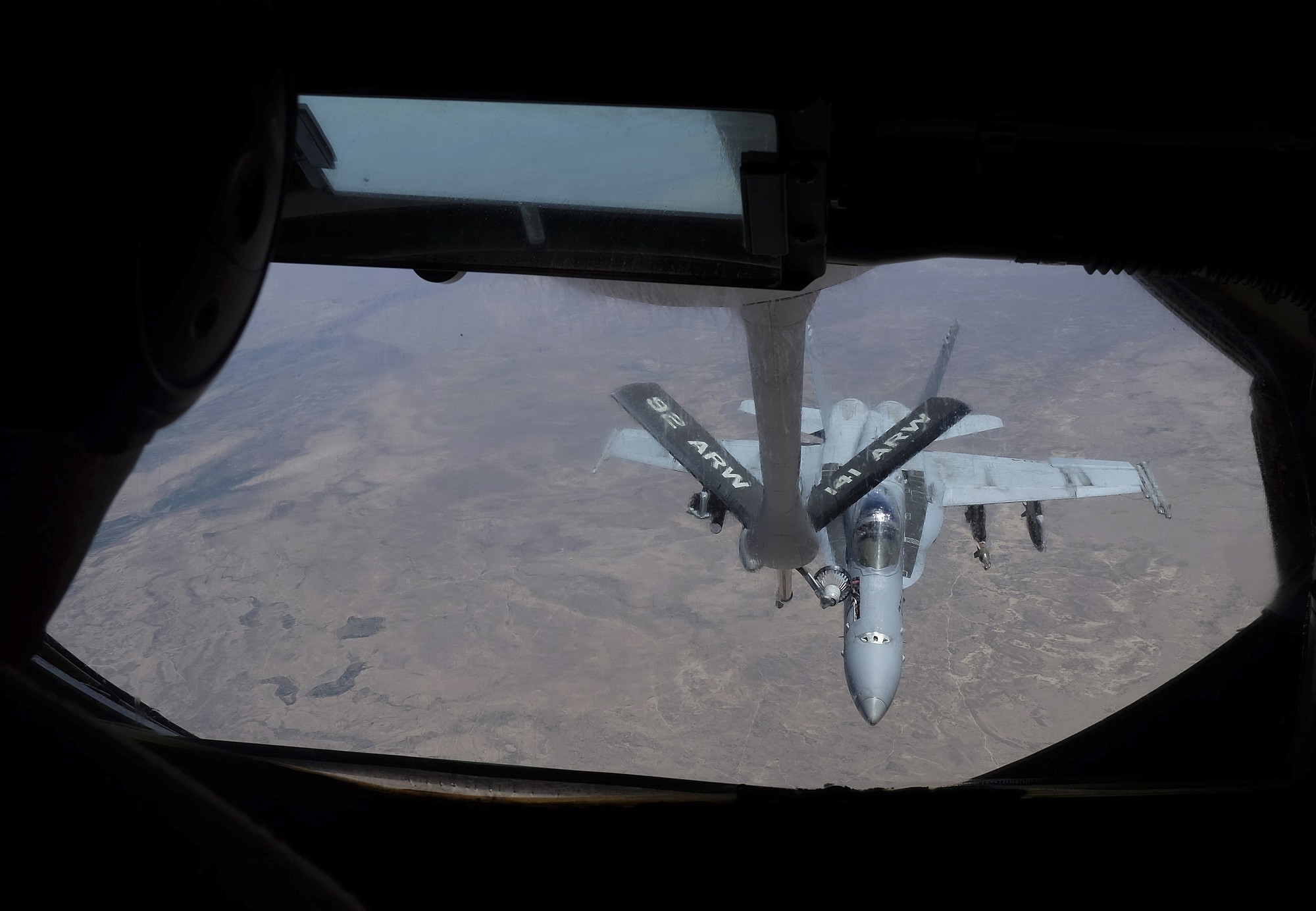AL-UDEID AIR BASE, Qatar — American refueling planes rumble into the air from this desert air base around the clock to top up coalition aircraft bombing Islamic State militants, whether they’re Arab fighters flying out of regional bases or French warplanes catapulted off an aircraft carrier in the Persian Gulf.
The al-Udeid Air Base in Qatar is the regional nerve center for the air war against the militants who have taken over nearly a third of Iraq and Syria. That makes it the main hub for coordinating warplanes from the U.S. and 11 other nations in the coalition carrying out bombing raids.
While the U.S. is doing the heavy lifting in the airstrikes, American officials say the allies’ contributions are vital.
“This is dangerous stuff. This is not political theater,” said Lt. Col. David Haworth, chief of the current operations division for the Combined Air Operation Center.
“I don’t think what we are doing today would be even remotely possible without the coalition partners,” he said. “To say that we want to or we are capable of going it alone I think would be a terrible mistake.”
The Combined Air Operation Center, packed with rows of computer terminals with big-screen monitors overhead, brings together officers from across the coalition to help share information and plan missions.
Intelligence gathered by coalition members helps give commanders a deeper understanding of how the Islamic State group operates on the ground, Haworth said. For example, at times its fighters mass together like a traditional army unit, while in other situations they behave more like insurgent guerrillas.
All information will be key in preparations for an eventual offensive by Iraqi troops and Kurdish fighters to retake the northern Iraqi city of Mosul, the biggest city under the extremists’ control.
“If they (the militants) want to try and reinforce, whether it’s Mosul or some other location, we want to make sure we’re ready,” Haworth said. “If they want to flee, we’ll want to make sure that we have that contingency covered as well.”
American planes in general hit more of what the military refers to as “dynamic” targets — ones that are not pre-planned — and a mobile insurgency like the Islamic State group makes for a lot of dynamic targets.
The Air Force estimates that half of all strikes in the battle stem from close air support for Iraqi ground forces. Another 30 percent involve hitting Islamic State militants traveling between Iraq and Syria.
Many coalition members, meanwhile, might drop multiple bombs on a single preset target, such as a militant-held compound or mobile oil refinery.
Since the bombing campaign began, American warplanes have handled 80 percent of the 2,780 airstrikes carried out as of Tuesday in Iraq and Syria, according to the most recent figures provided by the U.S. military.



